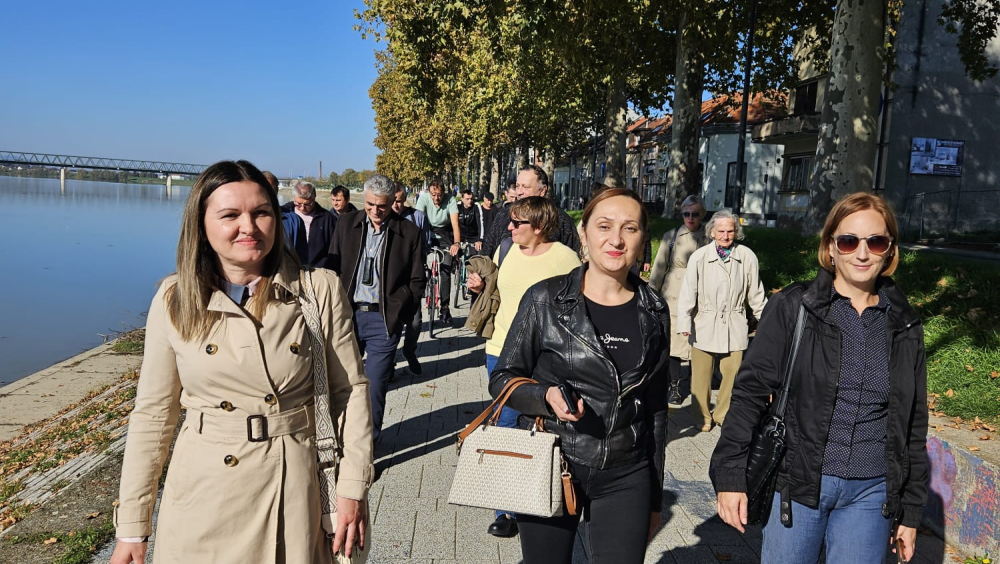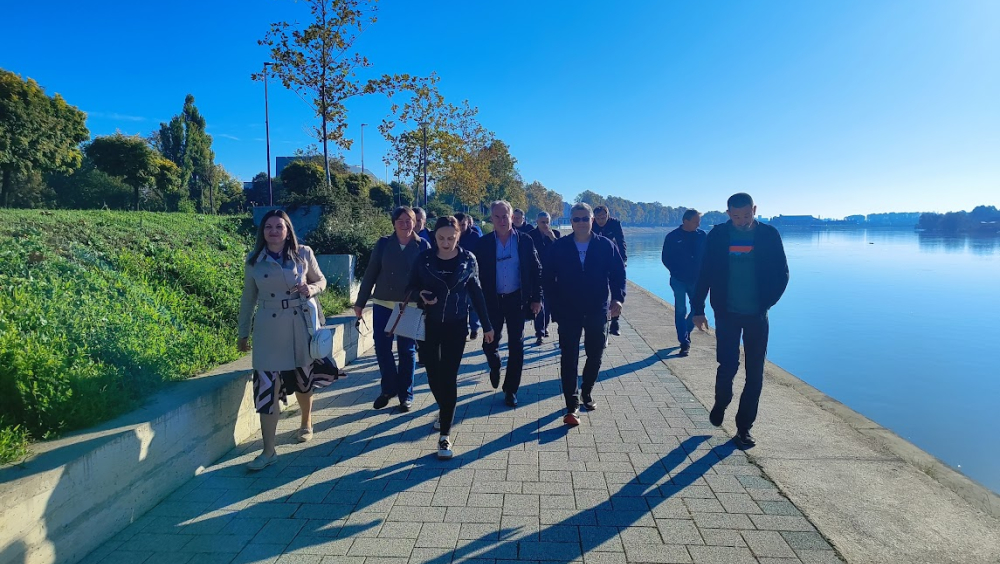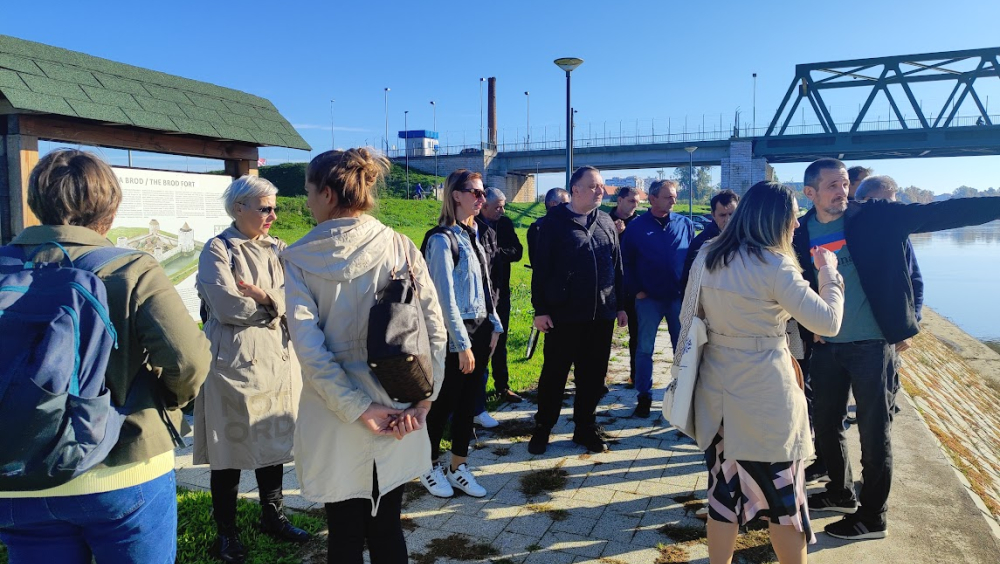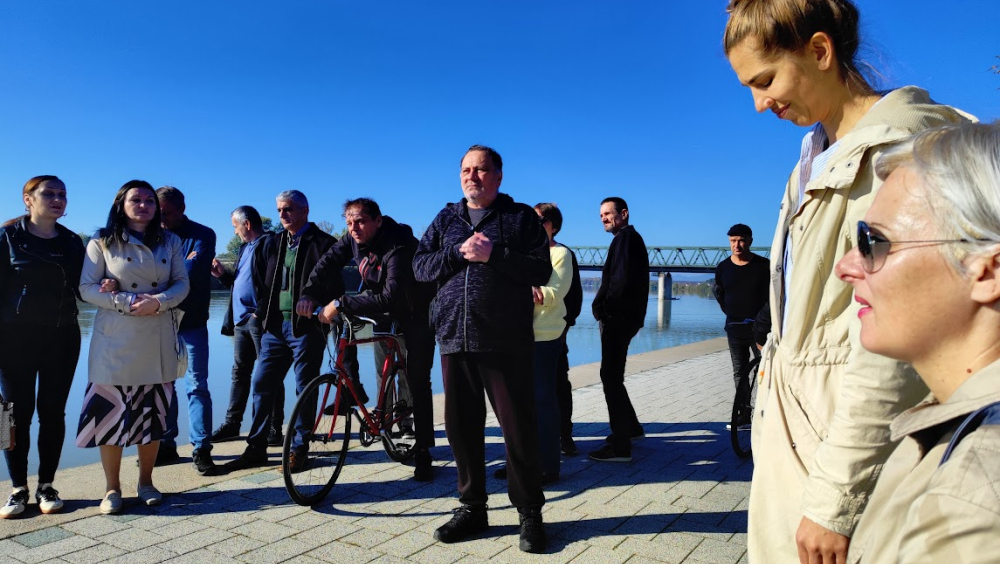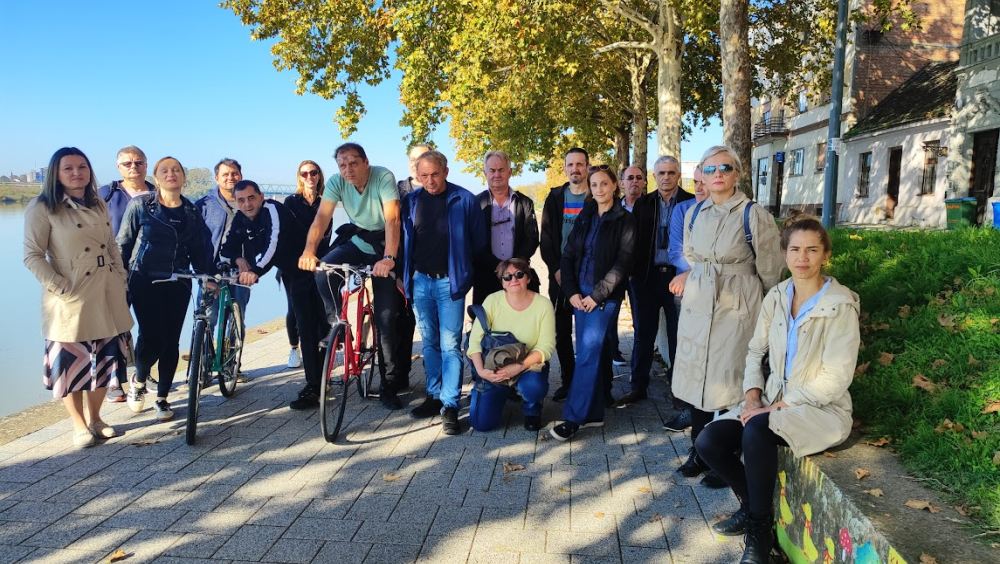If the river could speak, what do you imagine it would say to you? The Sava River and its people
During the last thirty years, communities along the Sava River have been divided by continuous borderisation of the river (the Sava became a state border in 1991, the EU external border in 2013, and the Schengen Area border in 2023), and affected by complex social changes, including the war (1991-1995), deindustrialisation, ageing population, and migration. By utilising local museum and arts collections, and building on resources and initiatives with local partners, the project seeks to encourage community conversations about the shared cultural and environmental heritage on both sides of the river, and empower communities to create their own narratives and share memories, ideas, and experiences in creative and non-confrontational ways. Rivers are inextricable parts and features of European identity; addressing complex experiences from recent European history using creative approaches to local heritage, fostering inclusivity and diversity of views on social, cultural and environmental issues is what makes this project significant at the European level and may be easily translatable elsewhere.
In literature, art and on film, rivers represent both meeting and dividing points. In everyday life, rivers are sites of memories, emotions and stories we create about ourselves and others. Hence the aim of this project is to explore how changes in lives of our communities are reflected in attitudes towards rivers and the way rivers influence story-telling. This relationship is especially important for communities with rich history by the rivers, and rivers which were – or still are – borders. Slavonski Brod is one such place: as key in the town's development, any tourist guide or a historian would inevitably mention Slavonski Brod's strategic position on the border of Austro Hungary towards the Ottoman Empire, the town's significance of an industrial centre in former Yugoslavia, the first line of defence during the Homeland War (1991-1995), and the border exit point of the European Union and the Schengen Area. The aim of the proposed project is to share and create stories about everyday life by the river marked by some of these significant historical and social upheavals – such as the war and its aftermath, changes in the social and economic system, and demographic shifts, including migration and aging population.
Creative practices and outputs enabled by this project will address a representational gap in media and public discussions: political and media coverage of Croatia’s recent accession to the Schengen Area focused on dismantling of the country’s border with Slovenia as the last step towards European integration and freedom of movement, while disregarding complex sentiments and realities on the external Schengen border on the Sava. They will also empower communities to have control over expressing their own narratives and experiences in creative ways, offering more intimate insights into what has been gained and what has been lost during the turbulent history which inevitably affected how we perceive our natural and political environment. Other similar initiatives have so far focused on the significance of the river in a broad historical and geopolitical context (e.g., “Sava River – A Source and a Guard of Heritage,” 2020 European Commission and Council of Europe funded exhibition; The Sava documentary film, 2021, dir. by Matthew Somerville), however, focus on everyday experiences and the relationship between the river and people appear to be less attended to.
The proposed project builds on our current small-scale pilot project entitled “The River Runs Through It: emotions, perceptions, and memories on both sides of the Sava River” (1st October 2024 – 1st June 2025) supported by the University of Glasgow's Impact Development Fund and in collaboration with the Brodsko Posavlje Museum, Slavonski Brod) with the aim of mapping sentiments and meanings in relation to the river. Two walkshops along the river (14th and 18th October 2024) were specifically designed for sharing stories and memories in a more informal way, and a post-walkshop cafe was an opportunity to record memories and reflections. The participants came from diverse backgrounds, including senior citizens and war veterans undergoing treatment for PTSD (outpatients of a daily hospital administering care). Along with photographs shared by the participants and from the Museum's collections, the stories and reflections are currently being incorporated into a bilingual (Croatian/English) photo-essay, which will be published on the Brodsko Posavlje Museum and the University of Glasgow's webpages. The stories unveil complex emotions ranging from the participants' anxieties about the river as a silent reminder of the recent war dividing families and communities to the river being cherished as a meeting point and a permanent symbol of home and belonging, in need of protection from environmental polution. Pre-war memories played an important role in narration, portraying the long-gone riverscape, marked by the stories of crossing, bathing, boating, and first loves. The feedback indicates that 1) the participants found the theme highly relevant and insightful and that 2) the walkshops were transformative in shifting perceptions and sharing narratives. Participants praised new insights which can be widely shared, and appraised the walkshops as an opportunity for sharing memories and making sense of traumatic experiences in a meaningful manner. Feedback from the partner institution suggested that the project aligned with their strategic priorities, particularly in three key areas: creation of new contents informed by user input, diversification of museum audiences, and inclusion of vulnerable social groups. The project attracted attention of the local media (Posavska Hrvatska Weekly, issues 41/2024 and 43/2024) and was also featured on Udruga Brod website (a regional association promoting women's and human rights).
In the “If the River Could Speak” project, we plan to build on our initial findings and outcomes to create a more holistic representation of the Sava River and its region, Posavina. The project stems from our sense that many sentiments and stories, especially the difficult ones, have remained unshared but could be explored further in a larger initiative. Some participants noted in their feedback that they were surprised the river, as an integral and intrinsic part of the environment, was even considered a topic. However, their reflections revealed a wealth of emotions and memories, uncovering a possibly untold history of everyday life. What remains unsaid is just as significant: every silence hits at an untold story or the beginning of deeper reflection on something taken as an universal fact. It is also important to acknowledge that certain sentiments and memories require more attention and time than a short pilot project could provide. Finally, some participants simply appreciated the opportunity to spend a sunny autumn morning by the river, socialise, and learn something new. This, too, is a meaningful outcome as it highlight the potential for community building, which can be achieved in a longer-term project.
Based on evolving partnership between Glasgow and Slavonski Brod, the proposed project is a transition towards an internationally sustainable initiative, in line with shared histories of Europe, and the promotion of the common values that underpin European integration (regardless of Brexit). Glasgow and Slavonski Brod have a lot in common: situated at the North-South axis, they are both postindustrial towns on their respective rivers. Similar to the Sava, the Clyde in Glasgow played an important role in the war, contributed to the city's postwar industrial development, and the fact that this longest Scottish river is also the most polluted river in Scotland. Life on the Clyde is captured by many small-scale initiatives (e.g., the University of Glasgow's „Who owns the Clyde?“), aimed at community building and diversification of cultural narratives in connection to the river. In Slavonski Brod, the Brodsko Posavlje Museum's valuable collections, as well as the Museum's emphasis on diversification of audiences and inclusion of vulnerable groups and minorities, may be utilised in order to raise awareness of importance of cultural and social landscape, and a sense of belonging to a rapidly changing world.
The project addresses virtually all characteristics of European Dimension. Some of these are:
a. Collaboration on multiple levels: our project is local, regional, cross-frontier (capturing experiences from both side of the river), as well as potentially international (long-term)
b. A focus on cultural diversity: we work closely with vulnerable groups, and address needs and concerns of multiethnic society
d. focus on people-centred activity: we aim to raise awareness of shared values and belonging as a top down approach to big historical narratives
g. Vision of cultural heritage as a resource: the project utilises local art and heritage resources in order to empower communities to share their stories in creative ways.
